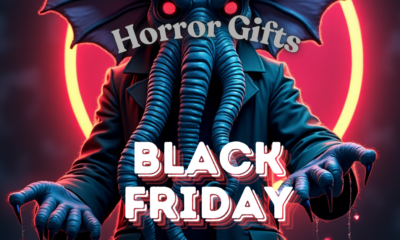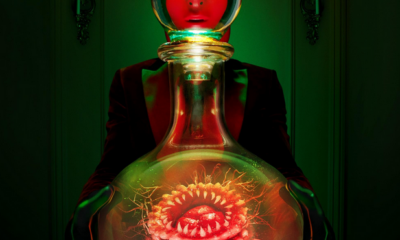Aaron Keeling’s The House on Pine Street is about a pregnant woman named Jennifer (Emily Goss) who thinks her temporary home might be haunted. The problem is, she’s only staying at the place because she recently went through a mental breakdown of sorts. Adding to our sense of mystery, we have limited knowledge of what that breakdown entailed. As her life goes from bad to worse, we’ll probably hope that Jennifer finally begins to find some peace and hope for a happier future. However, what seemed to be new hope of happiness turns into an indescribable nightmare.
This is, in many ways, a suspense movie. Although it’s a haunted house movie, we’re never quite sure where it will go next. Will the hauntings (or her imaginings) remain subtle or grow increasingly violent? Will these real-or-imagine spirits be mere pranksters or will Jennifer’s unborn baby be turned to ash from a three-alarm fire? You don’t quite know. Basically, I knew this was a good movie because it had me wondering if Jennifer would be forced to watch her young family burn. It had me imagining freaky scenarios independent of the actual scenes. Jennifer fights for her life and a chance at a new life, but it increasingly seems impossible.
Family Dynamics
I’m guilty of overusing the word “dynamics” as a writer. However, it so often rightfully applies. Here the dynamics obviously involve family and psychological disturbance, blending with possible paranormal hocus pocus. The House on Pine Street also carries that dread of family dysfunction. At a time when Jennifer should be overcoming all obstacles, she awkwardly reunites with her mother, Meredith (Cathy Barnett). feeling forced to do so and resenting Meredith for it.
There is obviously some sadness here, as no healthy person wants to dislike their parent — someone responsible for their very entry into the world. The discomfort carries over into a social gathering where, possibly, a man named Walter (Jim Korinke) invigorates Jennifer’s interest in the supernatural presence in her temporary home. Might the hauntings just be her imagination, brought on by delusions triigered by a roomful of family and friends? At first, Jennifer calmly and emphatically tells her husband (Taylor Bottles) of her suspicions, but it ends up getting more frantic as her fears intensify. So, while we don’t fully know her origins, her history, her hopes and her dreams, it could potentialy bring tears to the eyes of sensitiveviewers. We only get glimpses of her life, her childhood, her formative experiences, etc. However, we know she fears there will be an upcoming funeral.
More Reasons You Should Appreciate ‘The House on Pine Street’
I don’t wish to sound overly-excited about this or any movie, but what can I say? This is a haunted house movie done right. In fact, this might be one of the greats, as other critics have hinted at. So am I just trying to fit in with them, to maybe hobnob with better-established reviewers than myself? I assure you, I am not. This is a small, perhaps rare example of my actually agreeing with many snooty critics out there (that and The Blair Witch Project, which I side with supportive critics on).
Anyway, like any decent haunted house movie, this one makes us examine the everyday, the inane. You’ll find some of the most gruesome and unnerving objects in her house are not conventional murder weapons, but anything that could conceivably be moved or manipulated. Also, Jennifer must face her own fears to discover the identity of the mysterious force menacing her. Then again, what if it’s all in her own head?
Final Thoughts
This movie is better than plenty of franchise favorites, honestly. I mean, Hellraiser: Bloodline? Bah! Pinhead in space isn’t scary! A movie is much scarier if it makes you examine the space in your own head. This movie is definitely good if, on occasion, you want spooky elements but not any blood-sucking vampires, flesh-eating zombies, mask-wearing maniacs, or mists full of extravagant critters. Writers Keeling and Natalie Jones gave us a movie to remember, collecting a decent amount of accolades from critics. If they collaborate again, it should work. So far, so good.
Although this movie isn’t in the “found footage” genre, it somehow conveys a sense that you’ve stumbled across a hidden tape recording from Jennifer that explains all of her doubts about her existence. Even as the possibility of an invisible “spook” looms, you sense that she might be slipping with or without their presence. There’s every sense that a character can be gravely harmed, including any part of her family, and you’ll isntantly understand why her estranged mother is so disliked by her. Jennifer wants a silver lining and for hope to be renewed, but can it be? The idea that a semi-private conversation coukld’ve triggered her problem is interesting, too. That it might have become an obsession paints Jennifer as someone with a troubled inner voice. This movie is a stomach-churning package (in the good sense), and is compellingly claustrophobic.
What are your thoughts on The House on Pine Street? Let us know in the comments!
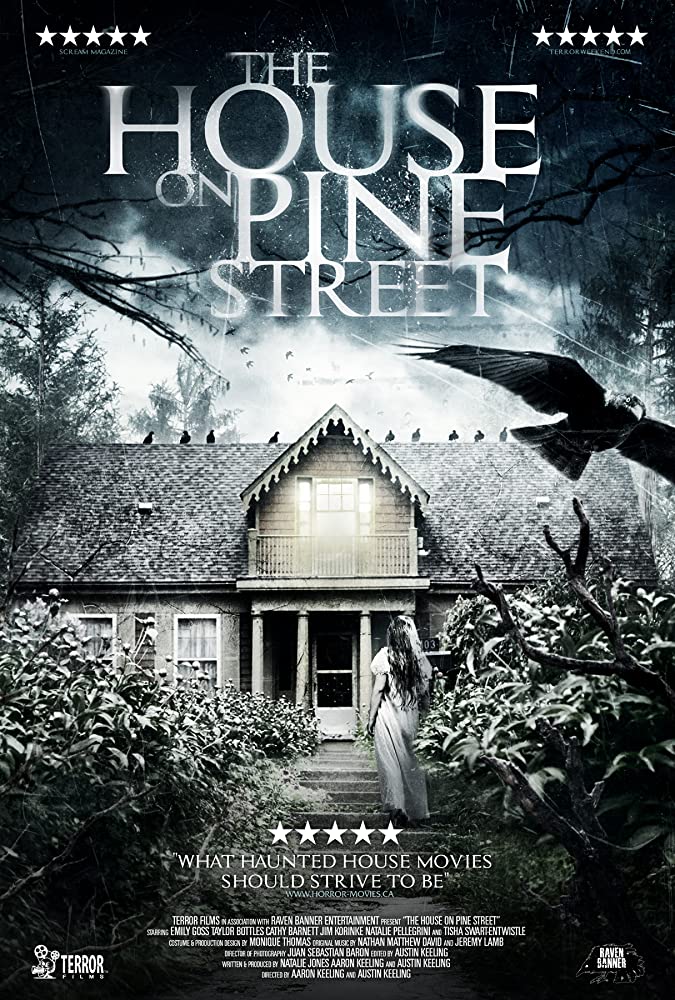


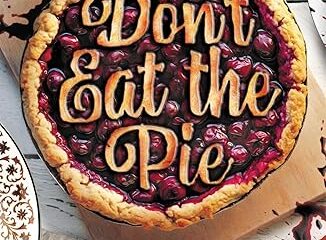

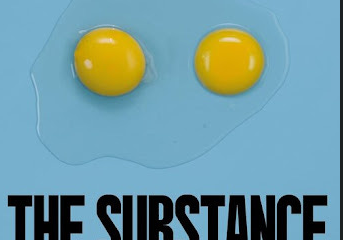



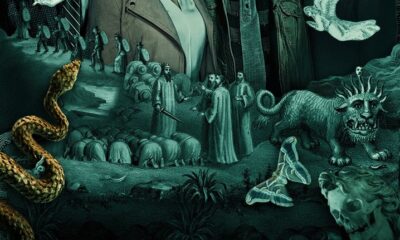



 (2.5 / 5)
(2.5 / 5)
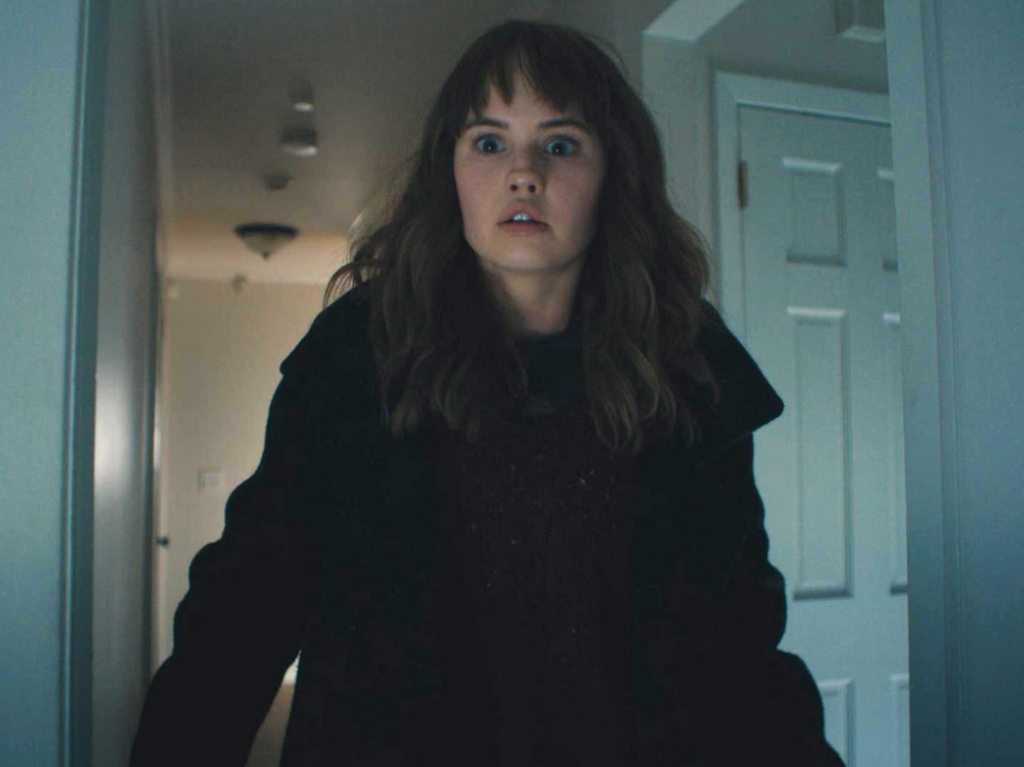
 (4 / 5)
(4 / 5)
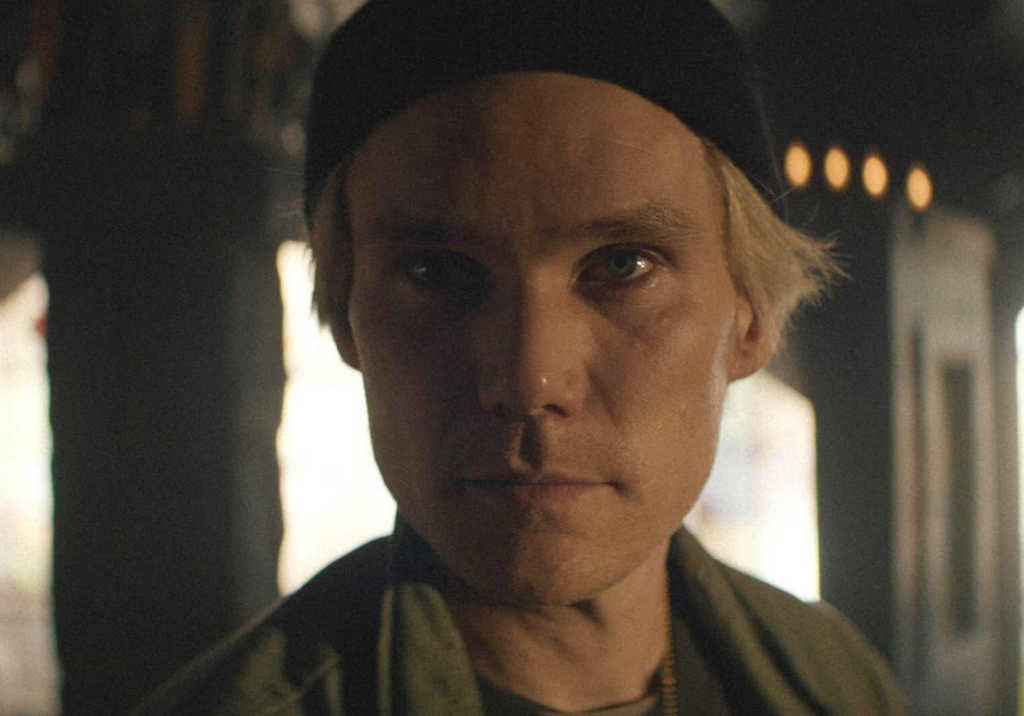
 (3.5 / 5)
(3.5 / 5)
